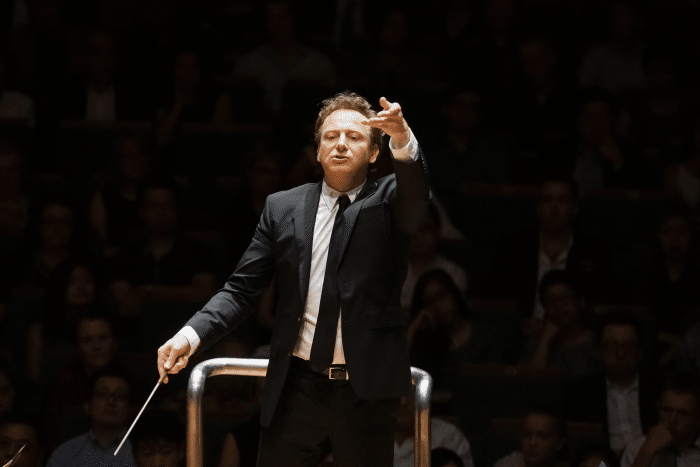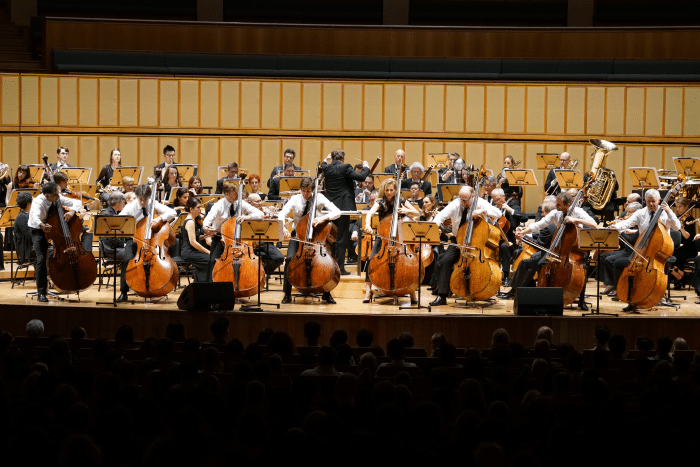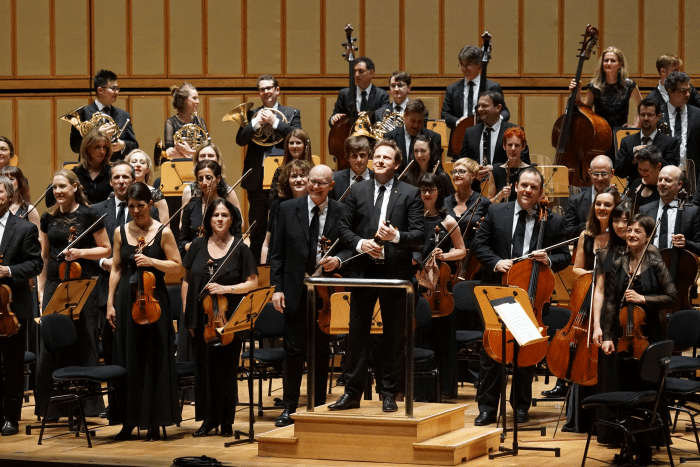Australian World Orchestra Concert Review: An Explosive Debut in Singapore
PUBLISHED October 14th, 2016 06:00 am
Put Australian musicians from the world’s top orchestras – including the famed Berlin Philharmonic, Vienna Philharmonic, London Symphony Orchestra, and BBC Symphony Orchestra – together and you end up with the electrifying Australian World Orchestra (AWO), a formidable ensemble in its own right.
One of the most exciting orchestra initiatives in the classical world, the inaugural AWO concert series was held in Sydney in August 2011, under the directorship of Chief Conductor and Artistic Director Alexander Briger, who’s conducted some of the most famous orchestras round the planet since his debut 25 years ago.
Last Saturday, Briger and 94 other members flew into Singapore for a one-night-only concert spectacular at the Esplanade Concert Hall featuring a magnificent programme, majority of which would be familiar to the casual listener of classical music.
The nearly sold-out concert began with Ravel’s Bolero, a single snare drum in the middle of the orchestra sparking off the iconic rhythm at a minuscule volume before crescendo-ing to a magnificent finale. A lot happens in between, showcasing practically every instrument of the orchestra – the pizzicato strings, singing flute, tenor and soprano saxophones (unusual instruments in an orchestra), and a jazzy clarinet taking turns to carry on the melodic motif.
With such a warhorse group of musicians, Briger barely needed to do much conducting, leading the direction of the piece with barely visible strokes and the occasional solo cues – executed with great finesse on the trumpet (David Elton) and sax (Christina Leonard). Bolero is essentially one giant crescendo over 16 minutes, and the world-class AWO soared as the music approached a tumultuous ending – with double snares and powerful blasts from the lower brass section – right before Briger dunks in the final chord of the piece to a rousing finish.
Double basses – a low-profile section at the back of every orchestra – do a role reversal in The Witching Hour concerto, featuring not just one but eight double bassists at the front of the stage. It’s quite a sight to behold, not just because of the sheer size, but the star-studded lineup seeing mighty principal players from the likes of Berlin Philharmonic and the Vienna Chamber Orchestra.
The work is the brainchild of contemporary Australian composer Elena Kats-Chernin, who explores scenes from the traditional Russian folktale of Vasilisa the Beautiful, a little girl who escapes from a wicked witch’s forest with the help of a magical wooden doll. The opening bars of the first movement Spectres in the Forest immediately give off a mystical-like feel with the vibraphone and marimba. The soloists join in singing beautiful high notes, much like a cello, but deeper and fuller. The unison then becomes a deep bellowing bass, etching deep into the heart.
If the first introduces us into the forest, the second movement, The Wooden Doll Awakes, speaks to us of the impending danger of the supernatural forest-dwellers – beautiful and magical with lurking darkness, from a slow walk as the oboe and bassoon interact, transforming into a scurrying waltz with muted trumpets, glockenspiel, and percussive effects on the double basses. The solemn Elegy then follows as Vasilisa’s mother dies, the soloists singing in a hymn-like cantabile style: raw, emotional, and a sense of unsureness. Plucked strings carry us into the final movement Vasilisa the Beautiful, a fun and energetic section turning tumultuous and warlike, eventually heading for a major key triump as Vasilisa escapes from Baba Yaga.
Tchaikovsky’s Symphony No. 5 takes up the second half of the concert, once again conducted impressively by maestro Briger. A classic in every orchestra’s repertoire, the musicians breezed along with well-practiced lines and seemingly little effort. The bass clarinet and strings lead the path with the melodic motif, quickly building up in tempo and dynamics with a powerful drive forward to the punchy climax of the movement.
The second movement, lyrical and emotional, features one of the horn repertoire’s most beautiful horn solos, perfectly executed by Ben Jacks (Sydney Symphony Orchestra) along with the power-packed string section. The AWO strides smoothly and confidently along the rest of the symphony, with a firm horn section and strong brasses – building up to the grand maestoso theme the piece is so known for and earning a very lengthy and well-deserved ovation from the audience.
Perhaps we were expecting an encore (Briger came out from the backstage over four times), but disappointingly there was none. Still, this was an entirely fine concert, considering how little time and rehearsals the musicians had before the tour. Every one of the AWO’s musicians are each incredibly talented, and when together, is nothing short of outstanding. We can only keep our fingers crossed that they’ll be returning soon.
For more details about the Australian World Orchestra, please click here.

